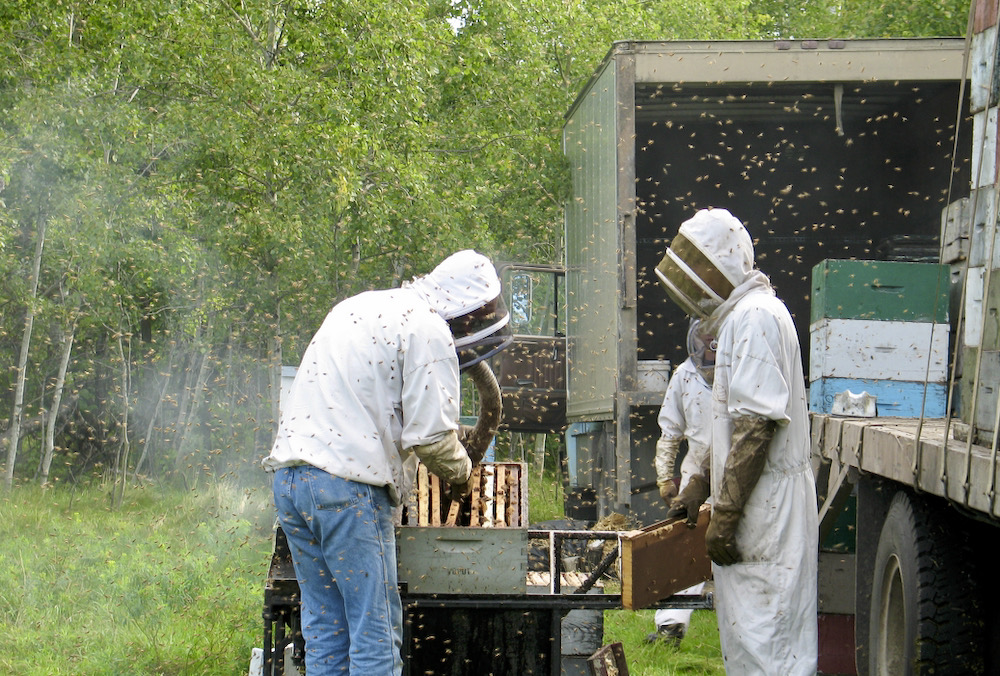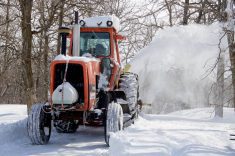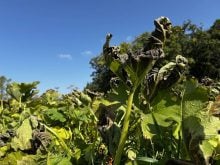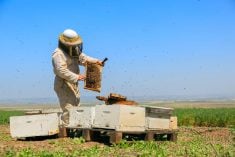Cattle producers won’t be the only ones in the livestock sector supplementing feed if the taps don’t turn on.
Manitoba’s beekeeping sector says, despite an optimistic start, it is now also facing down lower honey yield and a tough winter should drought conditions not abate.
Why it matters: Manitoba’s honey industry is facing down tough conditions due to drought.
Outlooks were initially positive this spring. Hives had been in good condition going into the winter, and mild temperatures helped survivability, although a cold spate in April had led to losses in smaller hives.
Read Also

Manitoba Ag Days plans star-studded speaker lineup
Dragons’ Den panellist Arlene Dickinson among speaker series highlight for 2026 Manitoba Ag Days in Brandon, alongside slate of agriculture experts.
According to provincial apiarist Rhéal Lafrenière, Manitoba saw about 15 per cent losses last winter, at the better end of Manitoba’s normal survival range. The province estimates normal losses at around 15 to 20 per cent.
At the same time, the honey market was riding a high, driven by pandemic baking demand and domestic supply shortfalls in 2020. While Manitoba’s honey crop was average, other provinces had seen significant production drops, due in part to difficulties sourcing new bee stock from major suppliers like New Zealand.
The Manitoba Beekeepers’ Association also noted an increase in scrutiny over honey fraud, which it said had helped bolster demand for local honey.
Even then, however, the province was showing the first notes of concern. Due to COVID-19, labour issues were expected in farms that typically bring in temporary foreign workers, although Manitoba Beekeepers’ Association chair Ian Steppler said that Manitoba’s labour demands were likely to be met. Also, farms that were looking to replace stock were facing a tough market, given continued shipment issues.
And, in the field, drought already loomed.
Some early-season canola challenges were actually expected to be a boon for beekeepers, Steppler noted, since the seeding period (and the subsequent bloom period) might be spread out over a month due to poor weather or flea beetle pressure.
At the same time, continued dry conditions would impact the annual crops honey producers rely on for nectar, while past dry years had seen shorter bloom periods, industry worried at the time.
Those fears have since become reality.
The season so far has been “a little bit of a roller-coaster,” Steppler said.
Optimism significantly dropped in July, as heat and drought continued to stress crops. The sector now expects below-average yields, unless there is moisture to bolster nectar production.
“We haven’t had any rain here and the flowers have pretty much dried up,” Steppler said.
His own operation is drawing honey a week to 10 days earlier than normal, from boxes that are about three-quarters full. That honey, at 16.5 per cent dry, represents the first time in Steppler’s memory that his honey is “that dry, this early before.”
New boxes, meanwhile, have yielded only limited honey.

Lafrenière predicts less honey will come out of Manitoba this year, perhaps significantly so if the weather doesn’t turn.
Canola, typically the bread-and-butter crop of Manitoba honey production, went into bloom under significantly trying conditions, he noted.
“When canola goes into bloom under drought conditions or moisture stress, we’ve always noted that the nectar production in those plants is always much lower than when we have an ample amount of rain occurring during the bloom period,” he said.
There is already an expectation that nectar from canola will be well down from normal.
“So then, we can extrapolate that our overall honey production is also likely going to be down,” Lafrenière said. “If we were to get some rains between now and mid-August, we could get some nectar or honey production off of some other crops, mainly crops like the alfalfas and crops that can have a bit of a recovery period, but again, that’s really dependent on getting those rains and when we get them.”
A hive in Manitoba will produce around 170 pounds of honey in a year, according to 10-year averages.
Winter challenges
Drought has also sparked increasing concern around overwintering bee stock.
Without rain, nectar flow may cut off too early for hives to properly get into condition, Steppler said.
“If it doesn’t rain, then we’re going to lose all of our flowers, and we need all those forage flowers to be able to grow and maintain our colonies, to be able to get them ready for winter,” he said.
Bee nutrition in the late part of the season is critical for building up hive populations going into the cold months, Steppler noted, adding that while producers can supplement feed, there are certain nutrients that are specific to natural feed sources.
A hive’s response, in a year when conditions are too dry and nectar cuts off too early, is to also shut down brood production early, according to Lafrenière.
“In the late summer, they need to continue to raise brood until that point where they start to switch over into that wintering mode,” he said.
Without that, hives may not have produced enough “winter bees,” leaving populations short and therefore vulnerable to stresses, he noted.
Winter bees are physiologically different from their summer counterparts, the provincial apiarist said. Unlike summer bees, which typically have a lifespan of six to eight weeks (and closer to four to six weeks in Manitoba, where bees are active throughout our longer days), winter bees live for six months, and have more fat.
The switch between bee types in a hive is triggered by changing day length in late summer and fall, according to Lafrenière.
Lafrenière equated this year with similar conditions seen in 2012. That season, he said, beekeepers also saw an early spring followed by dry and a premature cut-off of honey production.
“The bees kind of just sustained themselves throughout the month of August, but they were already scaling back,” he said. “We believe they went into winter with much less winter bees than normal.”
By spring, the populations in some of those hives were unsustainably small. That year saw winter losses top 46 per cent.
Market still high
Market conditions provide some silver lining for producers.
Prices are still well above normal, Steppler said, with some fall contracts locked in at over $2.40 a pound.
Those numbers are “very high,” Steppler said. “If we do get a bit of a lower-yield crop this year, maybe it’ll be offset by a better honey price.”
As of early 2020, the province estimated honey price closer to $1.65 a pound.
If rain does appear, there are also late-blooming crops and second-cut alfalfa that could still boost honey production this year, according to Steppler.
















